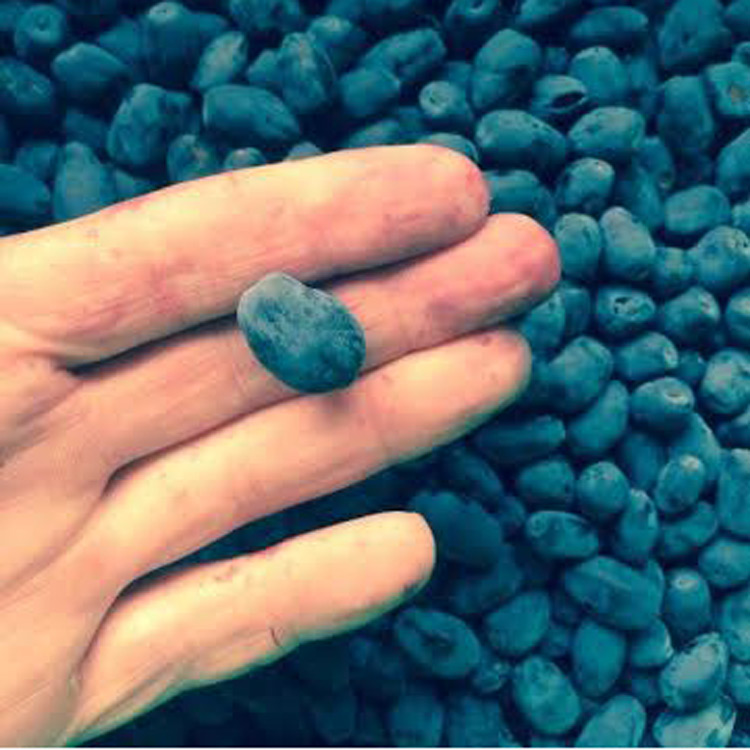What The Heck Is A Honeyberry?
I had one of my customers early this spring drive over from Ohio last year to buy some raspberries. He was telling me about this berry called a honeyberry that he grows and recommends . I’ll have several 2 yr old honeyberry bushes available for sale this spring. I expect these berries to start gaining more popularity as they become more familiar to gardeners throughout Indiana
So what is a honeyberry?
Honeyberry bushes typically grow from 3 – 8 feet tall, with oblong berries ½ – 1 inch or more in length, depending on the cultivar. A member of the honeysuckle family, the honeyberry shrub (Lonicera caerulea) grows circumpolar in the northern hemisphere. They are known as zhimolost in Russia, haskap in Japan, and honeyberry in the USA! Some people refer to the Japanese varieties as haskap and to the Russian varieties as honeyberry. Edible Blue Honeysuckle is an accurate way to refer to the species in general!

What does a honeyberry taste like?
Not having grown them in my own garden before all I can do is let you know what some of my research has said. some say they remind them of blackberry, cherry and even grape or kiwi. With a very thin skin, the zesty berries melt in your mouth! These healthy berries can be eaten fresh off the bush, or used fresh or frozen in your favorite blueberry recipe.
Facts About the Plant
Cold hardy to -55 F, blossoms withstand 20 F
- First fruit of spring (early blooming cultivars bear prior to strawberries, late blooming selections bear a few weeks later)
- Higher level of antioxidants than blueberries
- Grows in most soils in wide range of pH levels (4.5 – 8.5) though 5-8 is preferred. May perform better in clay soils than sandy soils.
- USDA zone 2. Fruiting depends on availability of pollinators when plants are blooming. Late blooming varieties may be more suitable for warmer climates. Testing of U of S bred cultivars currently taking place in zone 8.
- Some varieties produce 10+ lbs of berries after 5 years, others produce 1-2 lbs
- 50+ year lifespan
- Honeyberries do not sucker but send up shoots from the root crown
- Grows in sunny or shady locations. Bears best in sun in the North, needs some protection from sun in the South.
- Disease and pest resistant, great for organic gardening
- Many honeyberries require proximity to another unrelated honeyberry plant for pollinization by bees and other insects. Some varieties will produce some fruit alone.
